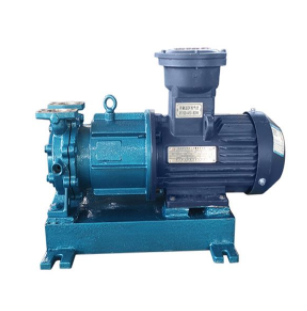Introduction of stainless steel magnetic pump structure and pickling principle

The main feature of stainless steel magnetic pump is that it uses a magnetic coupling to transmit power without leakage. When the motor drives the outer magnetic steel of the magnetic The motor rotates synchronously and transmits torque without mechanical contact. At the power input end of the pump shaft, since the liquid is enclosed in a stationary isolating sleeve, there is no dynamic seal and therefore no leakage.
The structure of the stainless steel magnetic pump is basically the same as the fluoroplastic magnetic pump. But its flow parts are made of austenitic stainless steel (304, 316L), duplex stainless steel, Hastelloy or titanium. Compared with fluoroplastic magnetic pump, the stainless steel magnetic pump has a simple manufacturing process and is suitable for transporting low-concentration acids, alkalis and organic solvents.
The corrosion resistance of stainless steel is mainly due to the addition of a higher composition of chromium to the steel (such as 316LW (chromium) = 16.00 to 18.00). The chromium is easily oxidized by air, and can quickly produce compact Cr2O3 on the surface of the steel to be oxidized by air. The film increases the electrode potential of the steel and the corrosion resistance in the air oxidized material. The corrosion resistance of stainless steel mainly depends on the extremely thin (about 1nm) dense passivation film covered by the surface layer. This passivation film is isolated from the corrosive medium and is the main shield for stainless steel protection. If the passivation film is incomplete or damaged by defects, the stainless steel will still be corroded. Surface oil contamination, scratches, rust, impurities, low melting point metal contaminants, paint, welding slag, splashes, etc. of the stainless steel container in the lining plate. Equipment and accessories are affected by the surface quality of the stainless steel, surface passivation film damage, and surface corrosion resistance Reduce and easily work with the direct influence of corrosive substances in subsequent chemical carriers. It is stipulated in GB150-1998 "Steel Pressure Vessels": "The surface of stainless steel vessels with anti-corrosion requirements should be pickled."
- Art
- Causes
- Crafts
- Dance
- Drinks
- Film
- Fitness
- Food
- Jogos
- Gardening
- Health
- Início
- Literature
- Music
- Networking
- Outro
- Party
- Religion
- Shopping
- Sports
- Theater
- Wellness
- IT, Cloud, Software and Technology


